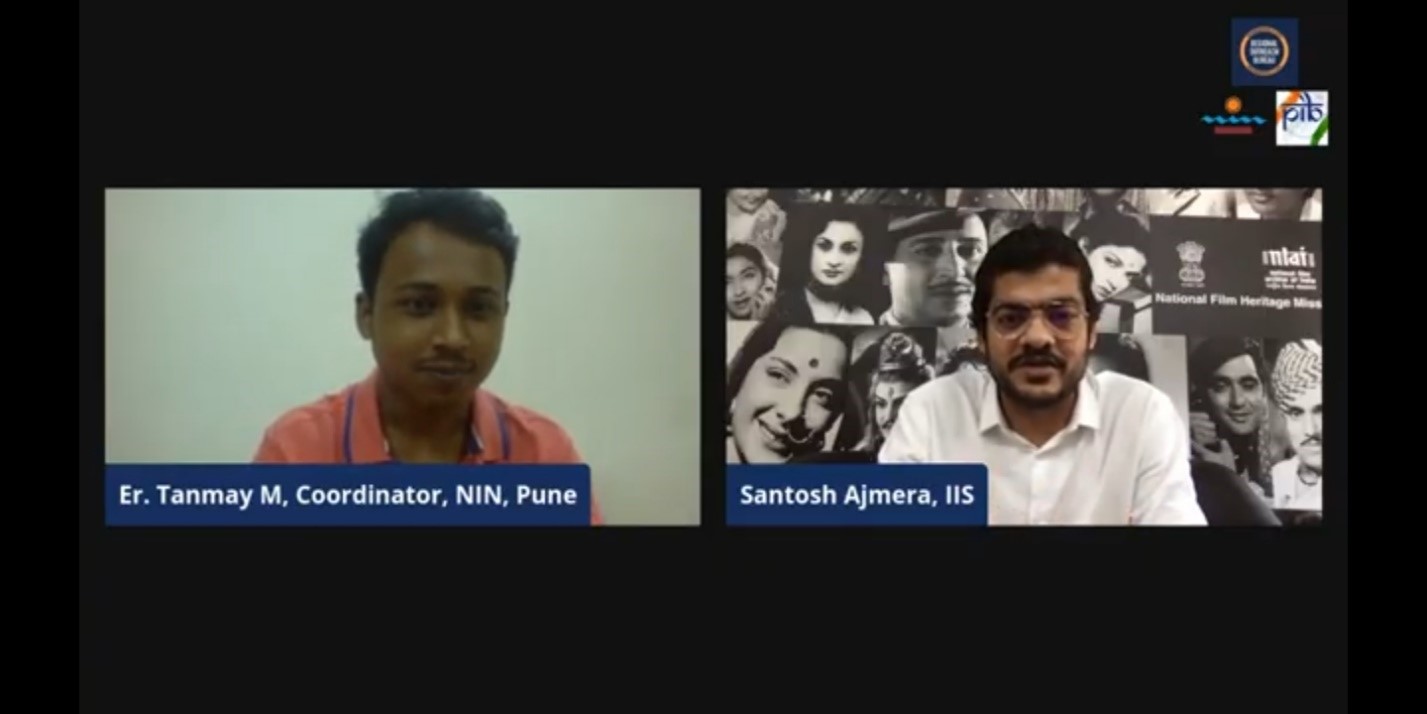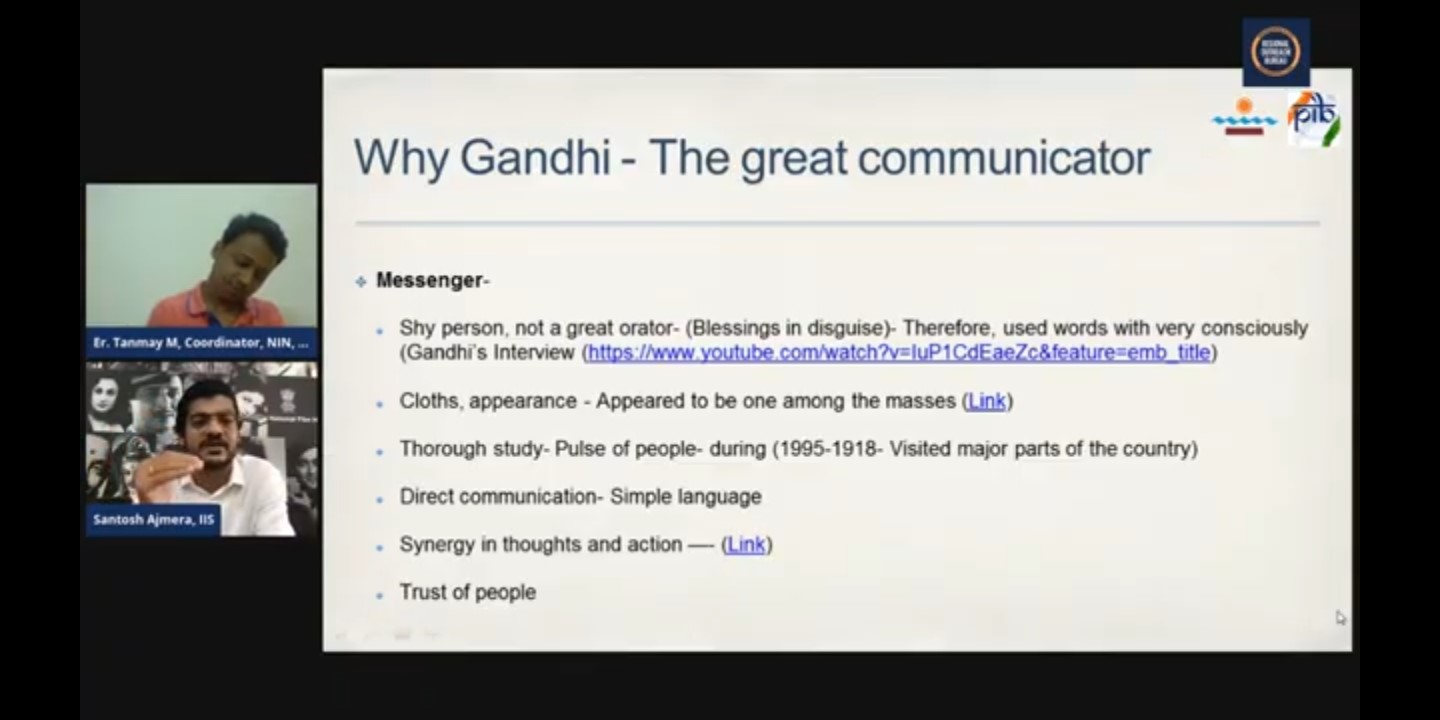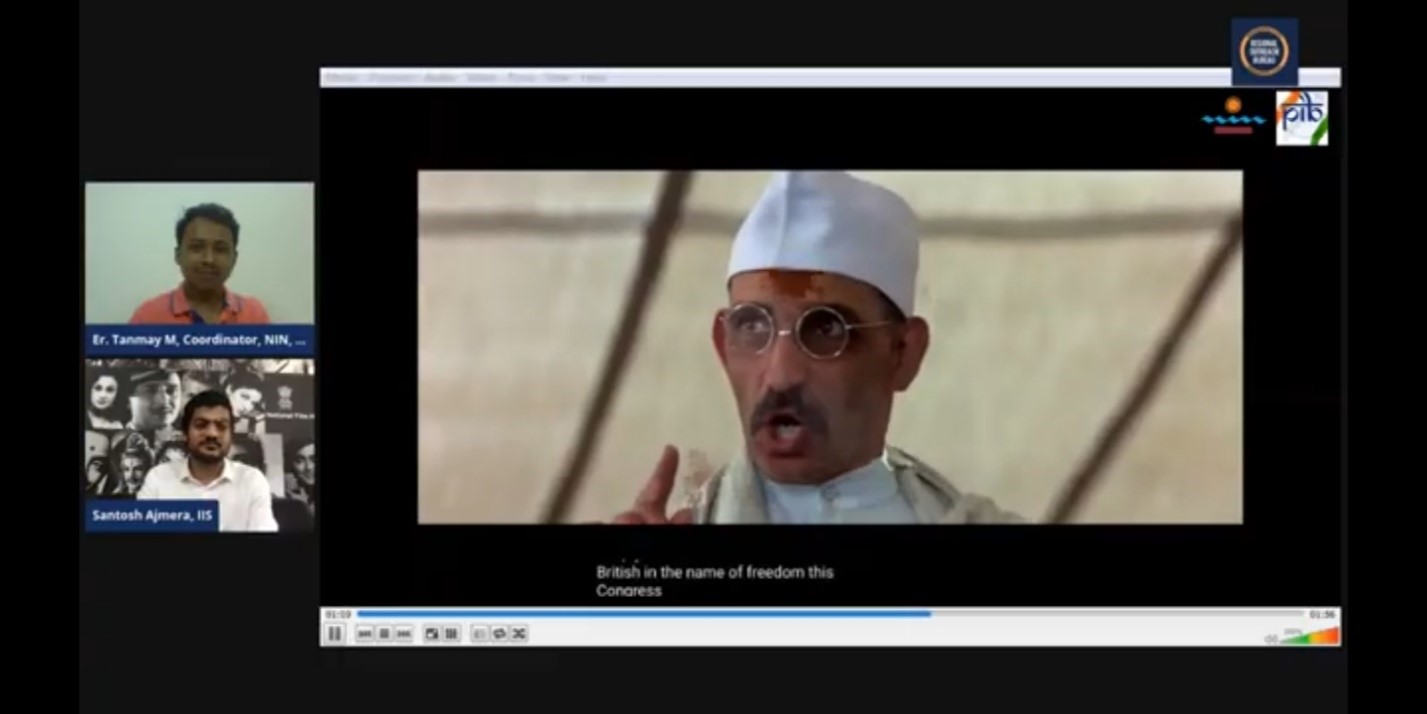Ministry of Information & Broadcasting
Government of India’s outreach activity is an example of Mahatma Gandhi’s participative communication, said Santosh Ajmera
Mahatma Gandhi was an effective communicator despite his shyness: Santosh Ajmera
प्रविष्टि तिथि:
18 OCT 2020 10:25PM by PIB Mumbai
Pune, 18 October 2020
The Hon’ble Prime Minister’s appeal to the masses for holding torch or ringing the bell during Covid19, involvement of people in Swachchh Bharat Mission through their contribution in cleaning their own houses and surroundings or giving away subsidies for Ujjwala Yojana are few of the examples in the recent past, where Mahatma Gandhi’s participative communication is being used, said Shri Santosh Ajmera. He was delivering his speech during a webinar on the theme ‘Gandhi as a communicator’. Shri Ajmera, is the Director, Regional Outreach Bureau, Ministry of Information and Broadcasting and in-charge of Media and communication for Government of India, in Maharashtra and Goa region. ‘Gandhi as a communicator’ is his research subject, under the research fellowship programme of Ministry of AYUSH.

Elaborating further, Shri Ajmera added, Mahatma Gandhi used participative communication during salt march, non-cooperation movement, swadeshi etc. garnering the support from the masses. Participative communication ensures message is being reached, accepted and adopted by the masses. The simple methods such as fast, prayers, non-co-operation etc are used to ensure peoples’ support for India’s independence.
Talking about communication Shri Ajmera said that we have some illusions that a good communicator needs to use all media vehicles, needs to look good and should have good communication skills, with command over language. A communicator like Gandhi seems to be opposite of all these traits. We often forget the difference between an orator and a communicator. The orator-ship is a one-way process of information dissemination while communication is a two-way process where the receiver responds to the message.

Differentiating between the media today and media during Mahatma’s time, Shri Ajmera said today everyone is a broadcaster, disseminating information with a click of a button. While we think, we are communicating, we may not! The media during Mahatma Gandhi's time was limited, with newspapers being the mainstream one as an important means of information dissemination. Ajmera pointed out that despite paucity of media presence, Gandhi was able to communicate till the last mile, using limited media resources available at his disposal. The reasons behind his effective communication, were due to his life based on principles, synergy between his thoughts, words and actions, his travel across the country enabling him to understand the pulse of people and his willingness to stand for the cause of people. Further, his message used to be direct and simple without any hidden agendas, which ensured participation from wider mass base. Gandhi was a great communicator, whose skills could be emulated, if one needs to communicate with masses and influence them, said Shri Ajmera.

The webinar was a part of 48 days webathon series jointly organized by National Institute of Naturopathy and Regional Outreach Bureau (Maharashtra and Goa region) and Press Information Bureau, of the Ministry of Information and Broadcasting, to commemorate, 150th birth anniversary year of Mahatma Gandhi.
* * *
Shilpa Nilkanth-ROB/DR
Follow us on social media:  @PIBMumbai
@PIBMumbai  /PIBMumbai
/PIBMumbai  /pibmumbai
/pibmumbai  pibmumbai[at]gmail[dot]com
pibmumbai[at]gmail[dot]com
(रिलीज़ आईडी: 1665793)
आगंतुक पटल : 434
इस विज्ञप्ति को इन भाषाओं में पढ़ें:
Marathi